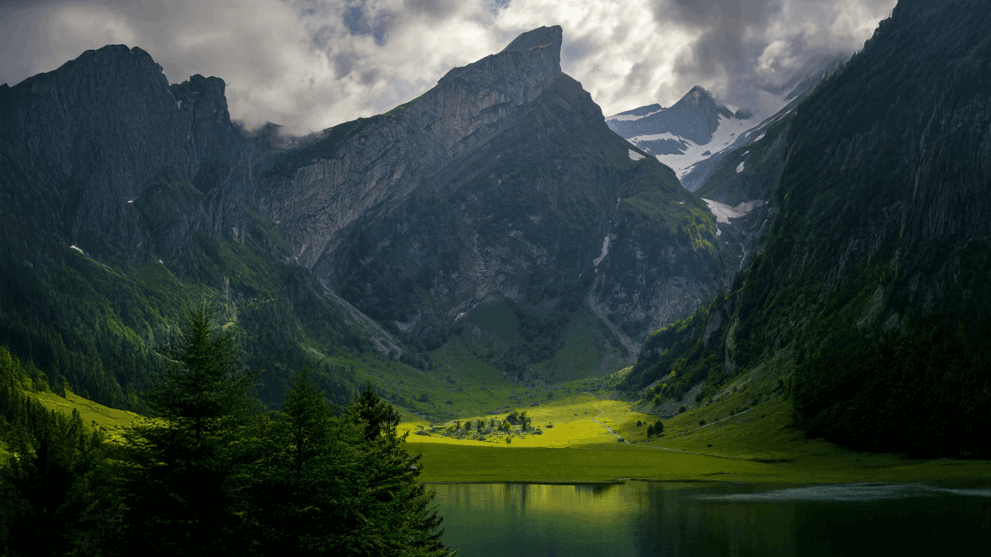Innovative Solutions and Investment Opportunities in Sustainable Finance with TNFD

As the urgency to account for natural capital grows, conversations between finance and biodiversity actors are helping to lay the groundwork for system-wide change. In the lead-up to Building Bridges 2025, our Event Partner InTent sat down with Tony Goldner, the CEO of the Taskforce on Nature-related Financial Disclosures (TNFD), to explore how a shared understanding of value, across natural, social, and financial capital, can guide more effective decision-making.
This exchange reflects how Building Bridges, together with partners like InTent, provides a platform for diverse actors to listen, learn and co-design solutions that align financial flows with nature-positive outcomes. In this conversation, TNFD (whose European launch took place at Building Bridges in 2023) shares how it defines sustainable finance, the barriers that remain, and the innovations needed to align financial flows with nature-positive outcomes.
InTent: How do you define and envision sustainable finance today?
Future business cashflows depend on nature’s ability to provide the flow of essential benefits – ecosystem services – on which all processes depend. It is essential we recognise that the resilience of businesses and financial portfolios depends on the resilience of nature. This understanding allows us to open the way to much-needed innovations in financial services and sustainable finance solutions.
It is essential we recognise that the resilience of businesses and financial portfolios depends on the resilience of nature.
InTent: What are the main obstacles preventing finance from becoming a true lever for sustainability?
The biggest barrier today is that financial flows in the form of government subsidies to nature-negative activities (for example, fossil fuel subsidies estimated at US$7 trillion by the IMF in 2022, or agricultural incentives such as fertilizers and irrigation highlighted by the OECD that accelerate biodiversity loss) overwhelm those contributing to nature-positive outcomes, accentuating medium-to long-term risks because of our dependencies on nature.
Shifting that balance requires policy and regulatory changes to realign economics and business incentives. In short, it needs to be more profitable working with nature than against it. Pricing and risk signals, from insurers and ratings agencies, can also play an important role, reinforced by financial product innovation such as sustainability-linked loans and parametric insurance.
It needs to be more profitable working with nature than against it.
InTent: How does TNFD, in collaboration with its partners, help address these challenges?
The TNFD was created to provide a suite of assessment and disclosure tools for business and finance across sectors and geographies. Since the launch of our LEAP assessment tool (a structured approach to help organisations Locate, Evaluate, Assess and Prepare for nature-related risks and opportunities) and our disclosure recommendations in September 2023, more than 600 organisations worldwide have voluntarily committed to start making nature-related disclosures in their mainstream corporate reporting. Early adopters include companies such as IKEA, Holcim, Standard Chartered and Norges Bank Investment Management, demonstrating the relevance of the framework across industries and geographies. Of these adopters, over 100 have already begun publishing TNFD-aligned reports, showing that implementation is both possible and underway.
The Taskforce is now developing additional guidance on nature in transition plans as well as sector guidance. With a range of international scientific, educational and data partners, the Taskforce is addressing key barriers to market action – namely, skills and capacity building within organisations and access to high-quality state-of-nature data.
InTent: In the current global context, how is TNFD adapting and innovating to accelerate the transition toward sustainable finance?
From the outset, the TNFD has developed and used an ‘open innovation’ approach to the development of its recommendations and guidance. Supported by more than 20 knowledge partners, consultation groups and input from thousands of market participants across sectors and geographies, this inclusive model has driven rapid market uptake and the willingness of organisations to start disclosing their nature-related issues publicly.
InTent: What message or action would we like to share with participants at this year’s Building Bridges conference?
It is important for all businesses and financial institutions to understand and respond to their dependencies on nature as well as their impacts. The organisations that have already begun publishing TNFD-aligned disclosures show that this work is both relevant to users of corporate reports, notably investors, and feasible for companies to implement today.
The perspectives shared by TNFD highlight a deeper shift in finance’s role, from passive allocator of capital to proactive enabler of systemic resilience. Redirecting capital from nature-negative to nature-positive activities is no longer a choice but a precondition for sustained prosperity.
The path forward calls for engagement, not instruction: considering the TNFD framework as a compass, drawing inspiration from early example disclosures showcased in TNFD’s illustrative reporting library, and reflecting on how pioneering corporate strategies might inform one’s own approach.
With Building Bridges on the horizon, the question will not be why finance must change, but how quickly and effectively it can rise to the challenge.
Register for Building Bridges to join the debate, and explore InTent’s programme during the event.
We Build Bridges Storytelling Series
Building Bridges is more than just an event—it’s a space for meaningful collaboration, fresh perspectives, and lasting connections. Through our storytelling series, we highlight the personal experiences that shape each edition. If you have a story to share about your engagement with Building Bridges — whether it’s a key insight, a memorable moment, or the impact of the bridges built—we’d love to hear from you!
Do you have a bridge-building story to share? Click here to submit one for review.
